Index to Georgia Wills and Estates

|
Find your ancestors on Georgia Pioneers Digital Images of Chatham County Wills and Estates, Genealogies, Bible Records, obituaries, cemeteries, and much more.

|

|
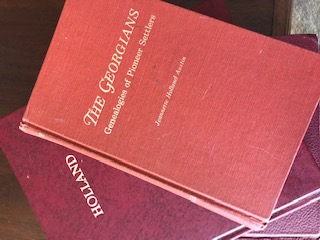 Regional Libraries and State Archives are still a good source for the researching genealogist. They have tons of information not available online. Certain public libraries are in the process of creating excellent web pages, they still operate under the budget system. Genealogists have always known this fact and donated materials when possible. You are likely to discover folder contributions inside filing cabinets as well as on microfilm. The old fiche system is going away. Yet, if you look around, libraries still have some fiche collections. People used to publish their books, then have the Mormon Church microfiche it. This is how such a vast collection of family genealogies amassed. Genealogists also took their genealogy to State Archives where it was microfilmed and then added to the general collection. . . . more . . .
Regional Libraries and State Archives are still a good source for the researching genealogist. They have tons of information not available online. Certain public libraries are in the process of creating excellent web pages, they still operate under the budget system. Genealogists have always known this fact and donated materials when possible. You are likely to discover folder contributions inside filing cabinets as well as on microfilm. The old fiche system is going away. Yet, if you look around, libraries still have some fiche collections. People used to publish their books, then have the Mormon Church microfiche it. This is how such a vast collection of family genealogies amassed. Genealogists also took their genealogy to State Archives where it was microfilmed and then added to the general collection. . . . more . . .| SPECIAL GENEALOGY OPPORTUNITY NOW for yourself and friends!
$7 (auto expires after 1-month) Try it out now to see if you can find your ancestors |

|
 People write some interesting stuff in their wills! Before we had the Internet, a convenient method of discovering the heirs was to read "abstracts" of wills, estates, deeds and marriages which were published in book. This tremendous undertaking by the authors of genealogy was insurmountable in brilliance. It saved the researcher a great deal of time. But now that we have access Internet to full documents on Georgia Pioneers. Reading the entire document is a boon to genealogists for a number of reasons. First and foremost, the heirs are mentioned with the details of their specific inheritance, and relationship to the deceased. Second, some of our previous assumptions taken from the abstracts can be clarified. Third, we can discover new information. And fourth, all the details are included, some of which the abstracter did not include because it was not clearly discernible on the old microfilm equipment. _____________________________________________________________________________
People write some interesting stuff in their wills! Before we had the Internet, a convenient method of discovering the heirs was to read "abstracts" of wills, estates, deeds and marriages which were published in book. This tremendous undertaking by the authors of genealogy was insurmountable in brilliance. It saved the researcher a great deal of time. But now that we have access Internet to full documents on Georgia Pioneers. Reading the entire document is a boon to genealogists for a number of reasons. First and foremost, the heirs are mentioned with the details of their specific inheritance, and relationship to the deceased. Second, some of our previous assumptions taken from the abstracts can be clarified. Third, we can discover new information. And fourth, all the details are included, some of which the abstracter did not include because it was not clearly discernible on the old microfilm equipment. _____________________________________________________________________________ | SPECIAL GENEALOGY OPPORTUNITY NOW for yourself and friends!
$7 (auto expires after 1-month) Try it out now to see if you can find your ancestors |

|
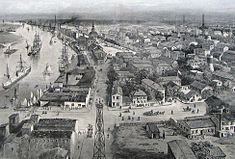
| SPECIAL GENEALOGY OPPORTUNITY NOW for yourself and friends!
$7 (auto expires after 1-month) Try it out now to see if you can find your ancestors |

|
 |
| Working to Preserve History |

 |
| Egyptian Hierglyphs |




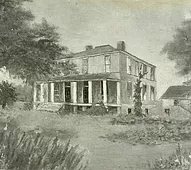 The Kelvin Grove property was purchased by Thomas Cater of Liberty County in 1798 from John Titus Morgan. It may have originally been part
The Kelvin Grove property was purchased by Thomas Cater of Liberty County in 1798 from John Titus Morgan. It may have originally been part 
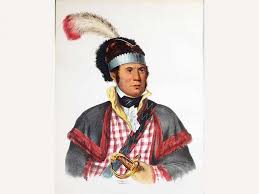 William McIntosh was a son of John McIntosh Mohr who came over with General Oglethorpe. William married a Creek princess. This chest was used for treaties with the Indians and may have been in the possession of the Highlanders at the Battle of Bloody Marsh. It is in possession of Walter B. Dunwody, a direct descendant of William McIntosh, cadet at the Battle of Boody Marsh and grantee of the land. Source: Kelvin Grove Plantation 1736-1986 by Huie, Murphy, Wilcox (1986).
William McIntosh was a son of John McIntosh Mohr who came over with General Oglethorpe. William married a Creek princess. This chest was used for treaties with the Indians and may have been in the possession of the Highlanders at the Battle of Bloody Marsh. It is in possession of Walter B. Dunwody, a direct descendant of William McIntosh, cadet at the Battle of Boody Marsh and grantee of the land. Source: Kelvin Grove Plantation 1736-1986 by Huie, Murphy, Wilcox (1986).

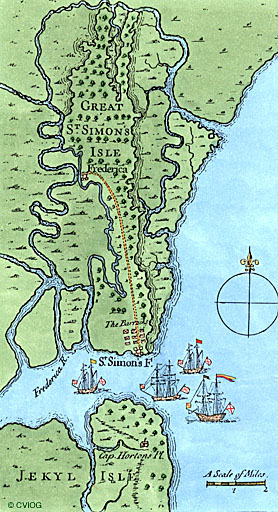 General Oglethorpe established a fort on the northern part of the island in 1738 and a smaller fort on the southern tip where the lighthouse was later built which was adjoined by Military Road. The Colonial Records of Georgia by Candler describes this road as being due east and crossing Gully Hole Creek at its narrowest point. A personal visit to this area suggests that this may have been the entrance through a stockade fence leading inside the town. There are cement several graves rising above the ground. Although the inscriptions are no longer discernible, the fact is (according to Candler) there were deaths occurring as early as 1741. After crossing Gully Hole Creek and the marsh, the road swung to the southeast, crossing the present (Frederica) Road to the south end just north of Obligation Pond which touched the eastern shore of St. Simon's where the present settlement of Harrington is located. From this point, it followed the edge of the marsh to the site of the Battle of Bloody Marsh.
General Oglethorpe established a fort on the northern part of the island in 1738 and a smaller fort on the southern tip where the lighthouse was later built which was adjoined by Military Road. The Colonial Records of Georgia by Candler describes this road as being due east and crossing Gully Hole Creek at its narrowest point. A personal visit to this area suggests that this may have been the entrance through a stockade fence leading inside the town. There are cement several graves rising above the ground. Although the inscriptions are no longer discernible, the fact is (according to Candler) there were deaths occurring as early as 1741. After crossing Gully Hole Creek and the marsh, the road swung to the southeast, crossing the present (Frederica) Road to the south end just north of Obligation Pond which touched the eastern shore of St. Simon's where the present settlement of Harrington is located. From this point, it followed the edge of the marsh to the site of the Battle of Bloody Marsh."The inhabitants of the Town went out on the 25th September 1738 with the General and cut a road through the woods down to the Soldiers Fort (Fort St. Simon's) in a straight line, so that there is open communication from thence; they performed this work in three days, tho' it is near 6 miles through thick woods." Source: Gentlemen's Magazine (London) January 1839. Very little of the original road remains today.



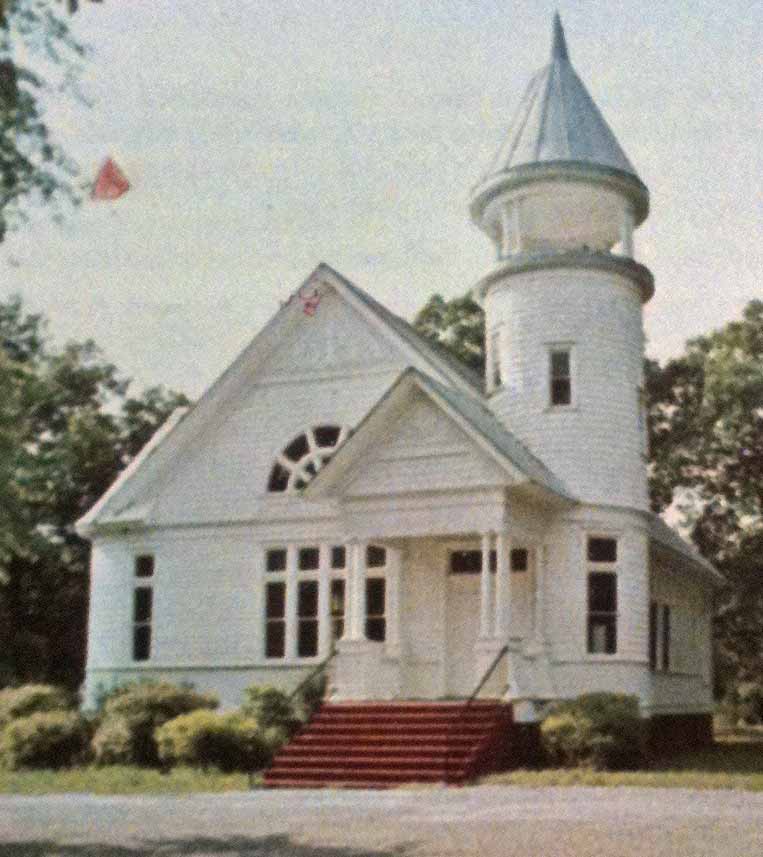 The old Christ Church on Frederica was organized by John and Charles Wesley in 1736, but not built until about 1808. It was destroyed by the forces of General Sherman during the War Between the States. For a long while, the settlers of Savannah and St. Simon's Island did not have a church building. Indeed, during the colonial era while Oglethorpe's troops were still on the island (they left about 1742 after winning the land war with Spain and returned to England), open air services were given by John Wesley whose efforts went unattended and unappreciated. The complaints against Charles Wesley included the fact that he frowned on getting drunk and shooting up the town after dark. Brothers, John and Charles Wesley were unsuccessful in acquiring public assistance for the construction of a church building.
The old Christ Church on Frederica was organized by John and Charles Wesley in 1736, but not built until about 1808. It was destroyed by the forces of General Sherman during the War Between the States. For a long while, the settlers of Savannah and St. Simon's Island did not have a church building. Indeed, during the colonial era while Oglethorpe's troops were still on the island (they left about 1742 after winning the land war with Spain and returned to England), open air services were given by John Wesley whose efforts went unattended and unappreciated. The complaints against Charles Wesley included the fact that he frowned on getting drunk and shooting up the town after dark. Brothers, John and Charles Wesley were unsuccessful in acquiring public assistance for the construction of a church building.
 An easier method of tracing ancestors is available should one study the history of the times. Sure, there are the standard history books. However, those books provided in schools, libraries and elsewhere do not begin to describe the history of any given era. Because it is the people themselves who make history. A few characters who fought in the Revolutionary War or made laws, does not begin to describe the real history! The key is to find the old neighborhood. In other words, where the families resided, neighbors and friends who witnessed their deeds, married their daughters, and labored on farms, developing a better way of life. One can learn the names of ancestors, but what did those people accomplish and who were they? County records provide interesting answers but to glean the details one must examine every possible record!
An easier method of tracing ancestors is available should one study the history of the times. Sure, there are the standard history books. However, those books provided in schools, libraries and elsewhere do not begin to describe the history of any given era. Because it is the people themselves who make history. A few characters who fought in the Revolutionary War or made laws, does not begin to describe the real history! The key is to find the old neighborhood. In other words, where the families resided, neighbors and friends who witnessed their deeds, married their daughters, and labored on farms, developing a better way of life. One can learn the names of ancestors, but what did those people accomplish and who were they? County records provide interesting answers but to glean the details one must examine every possible record!
 Mrs. Wesley of Lincolnshire, England had seven sons who were ministers of the Gospel. When General Oglethorpe visited the family in Epworth to convince the lady to send one of her sons to Georgia, she declared that she regretted that she only had her two youngest sons to give to the cause, the others already engaged. They were clerics of the new religion of Methodism. It was catching on, but still unpopular. On the voyage over, . . . more . . .
Mrs. Wesley of Lincolnshire, England had seven sons who were ministers of the Gospel. When General Oglethorpe visited the family in Epworth to convince the lady to send one of her sons to Georgia, she declared that she regretted that she only had her two youngest sons to give to the cause, the others already engaged. They were clerics of the new religion of Methodism. It was catching on, but still unpopular. On the voyage over, . . . more . . .Get More Genealogy Real Estate
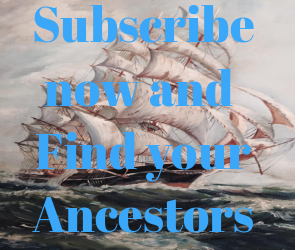 | JOIN 8 Genealogy Websites |
 Mrs. Wesley of Lincolnshire, England had seven sons who were ministers of the Gospel. When General Oglethorpe visited the family in Epworth to convince the lady to send one of her sons to Georgia, she declared that she regretted that she only had her two youngest sons to give to the cause, the others already engaged. They were clerics of the new religion of Methodism. It was catching on, but still unpopular. On the voyage over, the brothers had compassion for the savages and a strong desire to teach the Gospel to the Creeks in the region. John Wesley settled in Savannah and Charles Wesley in Frederica. more ...
Mrs. Wesley of Lincolnshire, England had seven sons who were ministers of the Gospel. When General Oglethorpe visited the family in Epworth to convince the lady to send one of her sons to Georgia, she declared that she regretted that she only had her two youngest sons to give to the cause, the others already engaged. They were clerics of the new religion of Methodism. It was catching on, but still unpopular. On the voyage over, the brothers had compassion for the savages and a strong desire to teach the Gospel to the Creeks in the region. John Wesley settled in Savannah and Charles Wesley in Frederica. more ... Get More Genealogy Real Estate
 | JOIN 8 Genealogy Websites |
 |
Photo credited to Dezeen.com |
Get More Genealogy Real Estate
 | JOIN 8 Genealogy Websites |